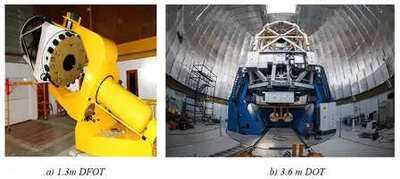

New Delhi, April 17 (IANS) Astrophysicists from Aryabhatta Research Institute of Observational Sciences (ARIES), an autonomous institute of the Department of Science and Technology (DST), have successfully detected and measured the properties of an intermediate-mass black hole (IMBH).
IMBH which has remained elusive is found in a faint galaxy called NGC 4395 about 4.3 million light-years away from Earth.
Using the 3.6m Devasthal Optical Telescope (DOT) -- India's largest optical telescope --, the team found that gas clouds orbit the black hole at a distance of 125 light-minutes (around 2.25 billion kilometre) with a velocity dispersion of 545 km per second.
“The discovery refines our understanding about how black holes, especially those that weigh between 100 and 100,000 Suns, grow and interact with their surroundings,” the scientists said.
For decades, astronomers have searched for a missing link in the cosmic black hole family: the elusive Intermediate-Mass Black Holes (IMBHs).
IMBHs are thought to be the seeds that grow into supermassive black holes. However, their faint nature and location in small galaxies make them extremely difficult to observe.
Unlike their larger counterparts, they don’t generate bright emissions unless they’re actively pulling in matter, making advanced observational techniques essential.
The team of astrophysicists, led by Shivangi Pandey studied NGC 4395 -- a low-luminosity active galaxy hosting one of the faintest actively feeding black holes ever observed.
They used the 3.6m DOT, and its indigenously developed spectrograph and camera ADFOSC, along with the smaller 1.3m Devasthal Fast Optical Telescope (DFOT) located at the Devasthal Observatory of ARIES in Uttarakhand’s Nainital.
The team monitored the object continuously for two nights using both telescopes and applied a special technique called spectrophotometric reverberation mapping.
This technique measures the delay between light emitted by the black hole's accretion disk and the surrounding gas clouds (broad-line region). This delay, or time lag, revealed the region's size and helped calculate the black hole’s mass, said the team.
The results, published in the Astrophysical Journal, showed that “the IMBH weighs about 22,000 times the Sun's mass, making it one of the most precisely measured intermediate-mass black holes. The black hole consumes matter at just 6 per cent of its maximum theoretical rate”.
“The hunt for more IMBHs is far from over. Larger telescopes and advanced instruments will be key to uncovering these cosmic middleweights,” said Dr Suvendu Rakshit, a scientist at ARIES.
--IANS
rvt/